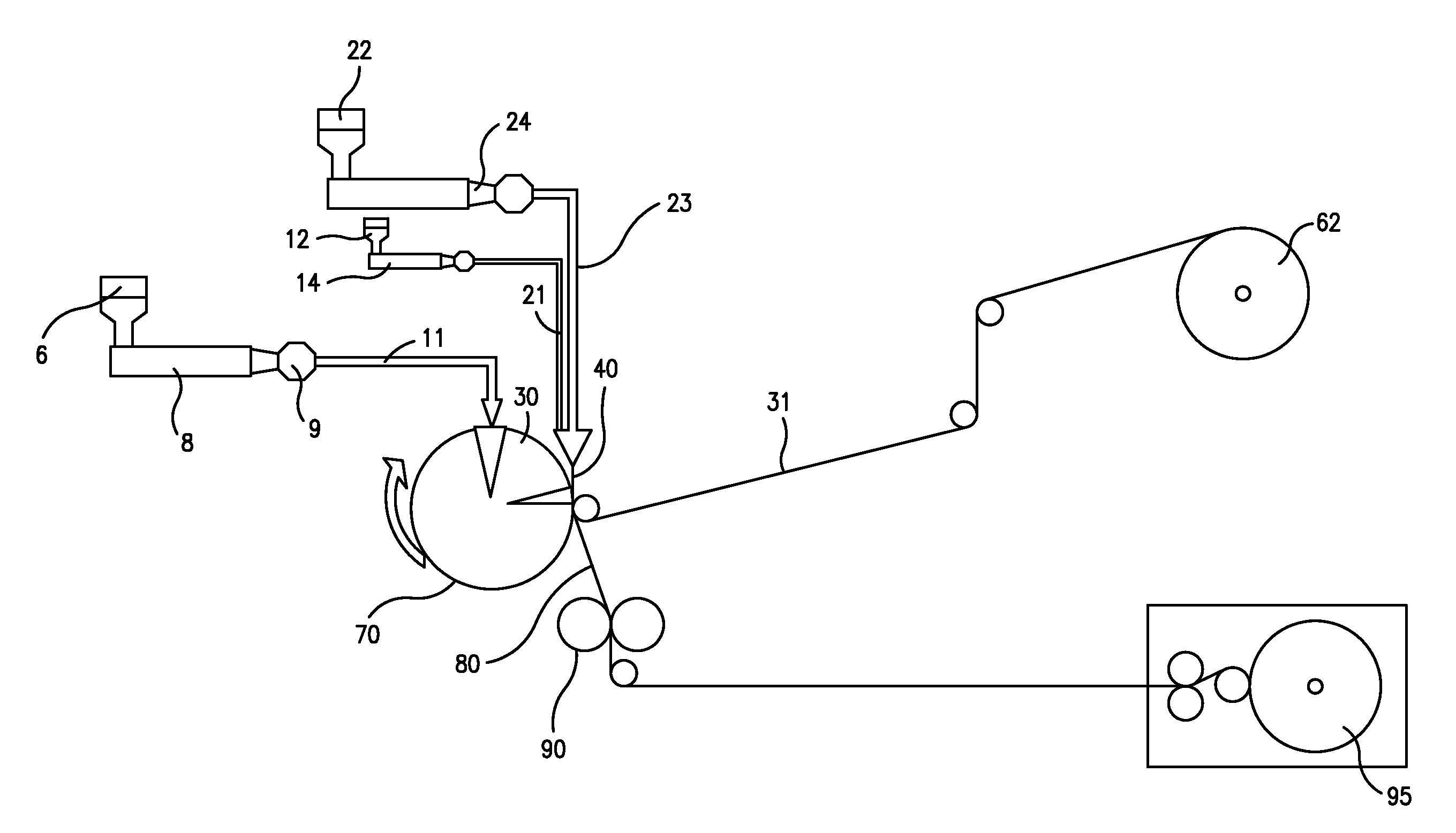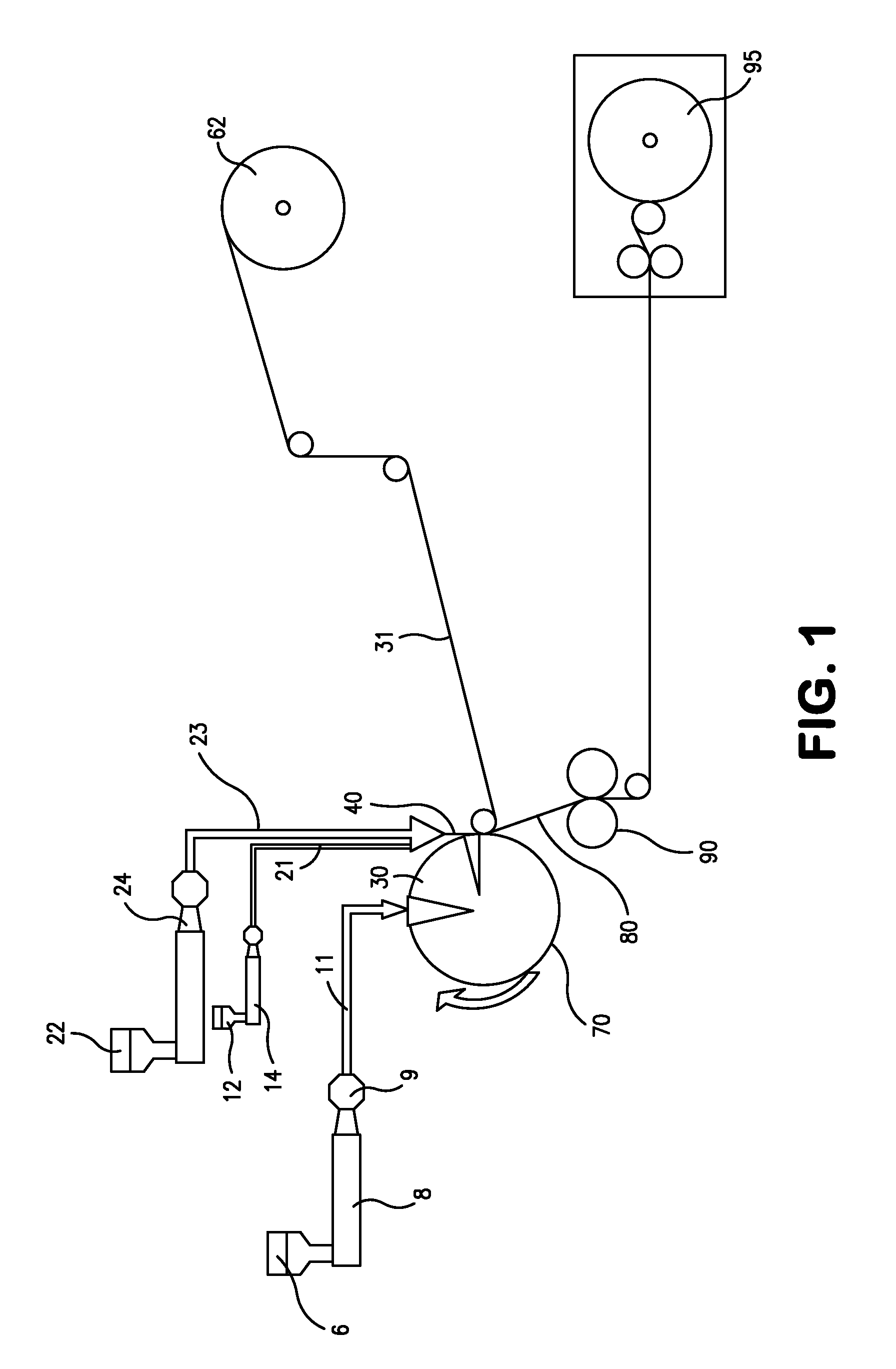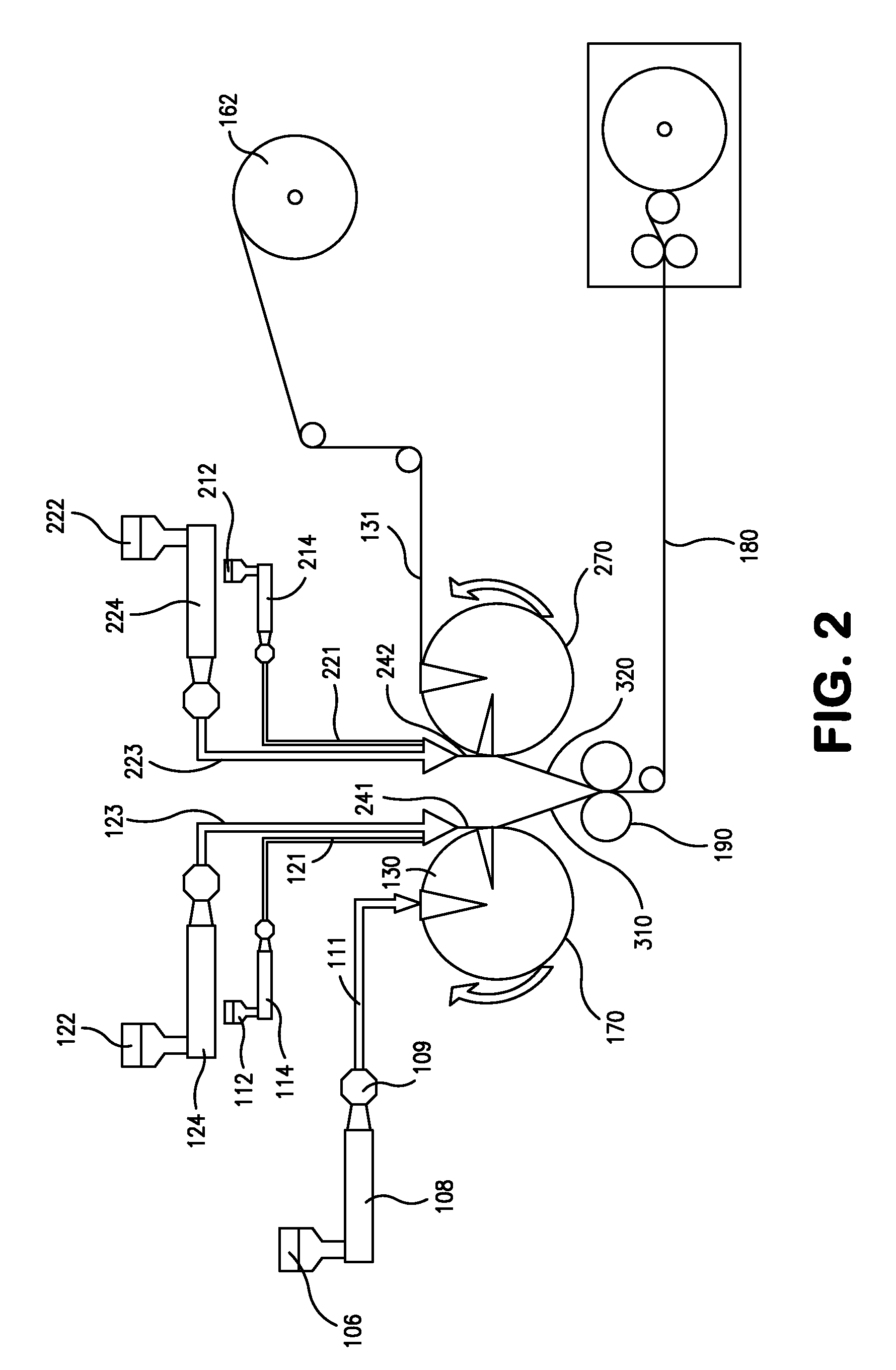Elastic Composite Containing a Low Strength and Lightweight Nonwoven Facing
a technology of nonwoven facings and composites, which is applied in the field of elastic composites containing low strength and lightweight nonwoven facings, can solve the problems of difficult manufacturing of low strength facings and significant damage to the integrity of the facing
- Summary
- Abstract
- Description
- Claims
- Application Information
AI Technical Summary
Benefits of technology
Problems solved by technology
Method used
Image
Examples
example 1
[0083]The ability to form an elastic composite was demonstrated. The film used in the composite contained 90 wt % of an elastomer composition and 10 wt % of a thermoplastic composition. The elastomer composition contained 86 wt. % KRATON® MD6716 (Kraton Polymers, LLC of Houston Tex.), 10 wt. % STYRON™ 666D (Dow Chemical), and 4 wt. % Standridge Color Corporation (“SCC”) 4837. KRATON® MD6716 contains approximately 75 wt. % of a styrene-ethylene-butylene-styrene (“SEBS”) block copolymer, tackifier, and polyethylene wax, and has a target melt flow rate of 7 g / 10 min (200° C., 5 kg). STYRON™ 666D is a polystyrene resin having a melt flow rate of 8 g / 10 min (200° C., 5 kg). SCC 4837 is a pigment containing titanium dioxide blended with polyethylene. The thermoplastic composition of the film contained 59.5% PP 3155 (ExxonMobil), 31.5 wt. % DOWLEX™ 2517 (Dow Chemical), and 4 wt. % SCC 4837. PP 3155 is a polypropylene homopolymer resin having a melt flow rate of 36 g / 10 min (230° C., 2.16 k...
example 2
[0087]The ability to form an elastic composite was demonstrated. The film used in the composite contained approximately 90-95 wt % of an elastomer composition and 5-10 wt % of a thermoplastic composition. The elastomer composition contained 86 wt. % KRATON® MD6716, 10 wt. % STYRON™ 666D, and 4 wt. % SCC 4837. The thermoplastic composition contained 48 wt. % PP 3155, 48 wt. % DOWLEX™ 2517, and 4 wt. % SCC 4837. The composite also included two facings between which the film was sandwiched. Both facings of the composite were prepared with a 17 gsm meltblown web containing 60 wt. % VALTEC™ HH441 (LyondellBasell) and VISTAMAXX™ 2330. VALTEC™ HH441 is an ultra-high melt flow polypropylene homopolymer resin having a melt flow rate of 440 g / 10 min (230° C., 2.16 kg) and a density of 0.902 g / cm3.
[0088]The polymers for the film and meltblown layers were compounded by weighing appropriate portions of pellets of each polymer, combining them into one container, and mixing them together by stirri...
example 3
[0090]The ability to form an elastic composite was demonstrated. The film used in the composite contained approximately 90-95 wt % of an elastomer composition and 5-10 wt % of a thermoplastic composition. The elastomer composition contained 59.5 wt. % KRATON® MD6716, 31.5 wt. % STYRON™ 666D, and 4 wt. % SCC 4837. The thermoplastic composition contained 59.5 wt. % PP 3155, 31.5 wt. % DOWLEX™ 2517, and 4 wt. % SCC 4837. The composite also included two facings between which the film was sandwiched. The facings were the same as those used in Example 1.
[0091]The polymers for the film and meltblown layers were compounded by weighing appropriate portions of pellets of each polymer, combining them into one container, and mixing them together by stirring. After compounding, the elastomeric film was formed to a basis weight of 44 gsm using a 20″ wide Randcastle co-extruding film die. The elastomeric component of the film was fed to the extruder at a spin pump speed of 7.96 rpm, a hose tempera...
PUM
 Login to View More
Login to View More Abstract
Description
Claims
Application Information
 Login to View More
Login to View More - R&D
- Intellectual Property
- Life Sciences
- Materials
- Tech Scout
- Unparalleled Data Quality
- Higher Quality Content
- 60% Fewer Hallucinations
Browse by: Latest US Patents, China's latest patents, Technical Efficacy Thesaurus, Application Domain, Technology Topic, Popular Technical Reports.
© 2025 PatSnap. All rights reserved.Legal|Privacy policy|Modern Slavery Act Transparency Statement|Sitemap|About US| Contact US: help@patsnap.com



